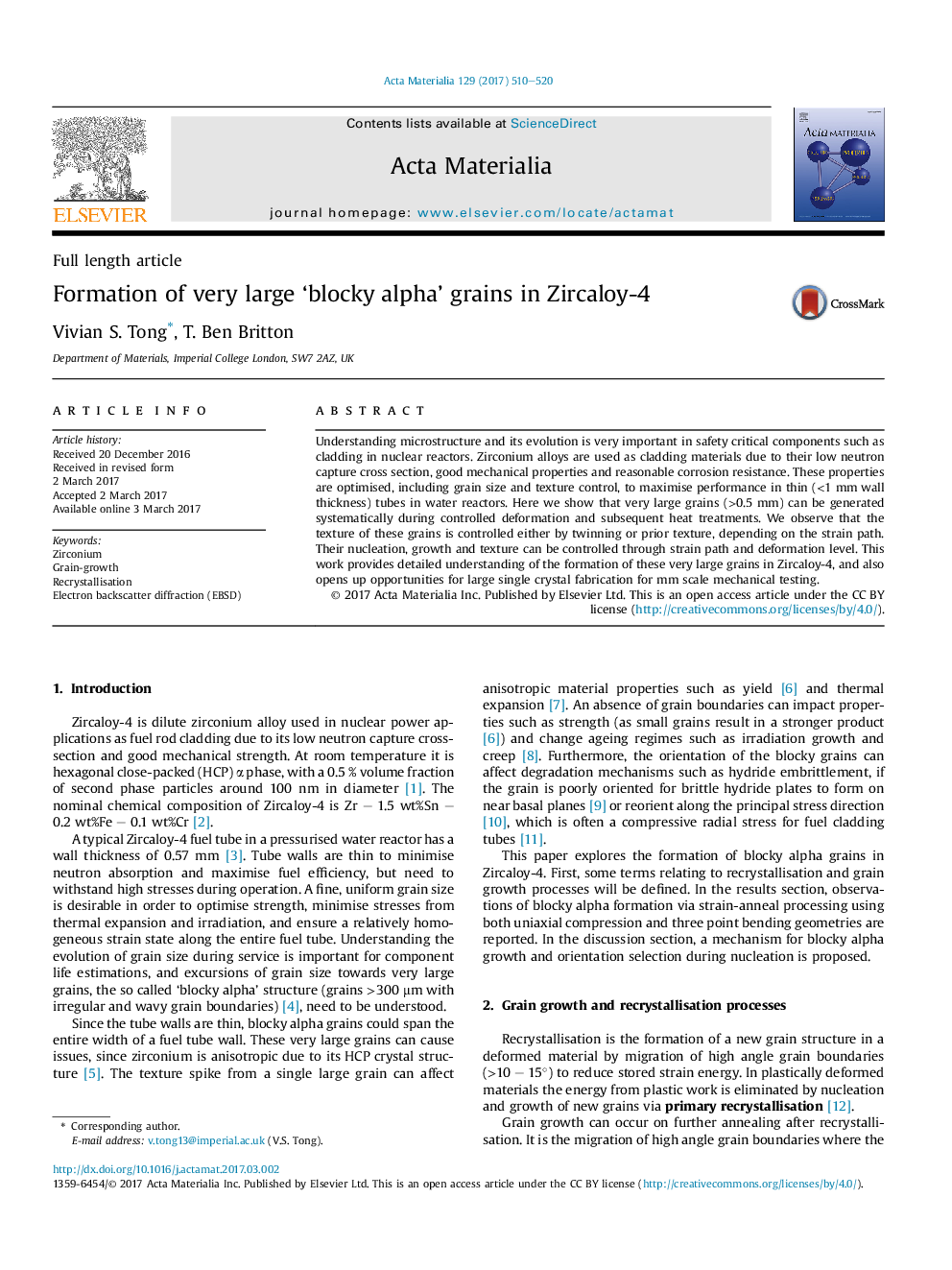| Article ID | Journal | Published Year | Pages | File Type |
|---|---|---|---|---|
| 5436247 | Acta Materialia | 2017 | 11 Pages |
Understanding microstructure and its evolution is very important in safety critical components such as cladding in nuclear reactors. Zirconium alloys are used as cladding materials due to their low neutron capture cross section, good mechanical properties and reasonable corrosion resistance. These properties are optimised, including grain size and texture control, to maximise performance in thin (<1Â mm wall thickness) tubes in water reactors. Here we show that very large grains (>0.5Â mm) can be generated systematically during controlled deformation and subsequent heat treatments. We observe that the texture of these grains is controlled either by twinning or prior texture, depending on the strain path. Their nucleation, growth and texture can be controlled through strain path and deformation level. This work provides detailed understanding of the formation of these very large grains in Zircaloy-4, and also opens up opportunities for large single crystal fabrication for mm scale mechanical testing.
Graphical abstractDownload high-res image (328KB)Download full-size image
